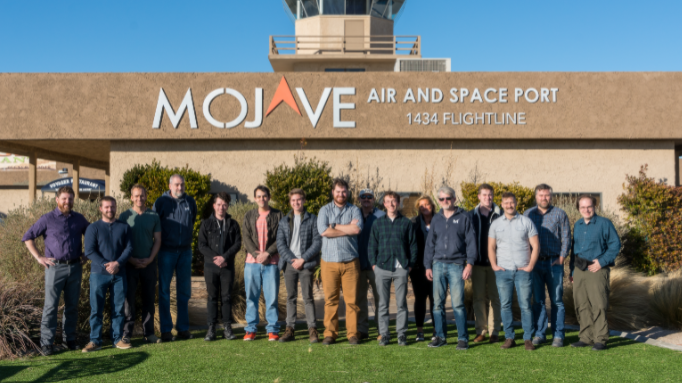In January 2022, pioneering space infrastructure company Masten Space Systems was preparing for its first mission to the Moon. “It will be the first of many Masten missions,” said the company at the time. However, after putting at risk a NASA-funded Moon lander project, coupled with some severe financial distress, the business filed for Chapter 11 bankruptcy in Delaware on July 28, 2022.
Masten Risks Multi-Million-Dollar NASA Mission
First reported by Canadian space media Parabolic Arc, news of the company’s troubled financial situation follows a series of struggles, including layoffs on June 24 and the subsequent furlough of the rest of its staff for July. To make things worse, a source familiar with the situation told Parabolic Arc a few weeks ago that, when Masten laid off engineers working on the highly awaited XL-1 Moon lander, it risked its multi-million dollar NASA-funded mission.
According to the official document filed on Thursday, the company has an estimated asset worth between $10 and $50 million and liabilities in that same range. Additionally, it has between 50 and 99 creditors, as well as creditors with unsecured claims, the largest being SpaceX with $4.6 million of unpaid vendor debt, followed by space vehicle tech developer Psionic with $2.8, and space robotics company Astrobotic Technology with $2.7. Other creditors with unsecured claims include nanosatellite company NuSpace, Airbus Defense and Space Netherlands, test rocket manufacturer Agile Space Industries, and more.
Signed by David Masten, founder, CTO, and chairman of Masten Space Systems, the document states that Intuitive Machines, one of its competitors, will buy Masten’s launch credit with SpaceX following a “stalking horse asset purchase agreement,” which is basically the initial bid on a bankrupt company’s assets.
Founded in 2004, Masten has been building and flying reusable rockets for nearly two decades, with the most successful rocket-powered landings in the industry. A few years ago, the Mojave,California-based company began applying its terrestrial flight experience to lunar missions. Then, in April 2020, Masten won a NASA contract to deliver a suite of payloads to the lunar south pole. Under NASA’s Commercial Lunar Payload Services (CLPS) program, the company brought in $75.9 million to supply nine science and technology demonstration payloads to the lunar surface by December 2022 using its XL-1 lander.
3D Printing Rocket Engine Parts
In preparation for its upcoming lunar mission, Masten turned to Elementum 3D to collaborate on refining the 3D printing firm’s Reactive Additive Manufacturing (RAM) technology for aerospace applications, like combustion and rocket engine devices. In 2020, the duo began working on a patent-pending PermiAM laser powder bed fusion AM process, which allows for material-agnostic transpiration cooling: a thermodynamic process where a liquid or gas is moved through the wall of a structure to cool it by absorbing some of its heat energy. Some of the NASA engines that have seen the most action, like the RS-25 and RL10, use injector faces with this type of cooling.
Compared to conventional manufacturing methods, the process can also form micro-scale porosity, which, as Elementum explained at the time, enables high injector performance through “high-fluid resistivity and controllable pressure drops.”
Masten and Elementum even got to successfully hot-fire a PermiAM fuel injector made with Elementum’s AMCopper-100 (pure copper) and A1000-RAM10 materials. They were waiting to perform tests for both its GR-Cop42 and Inconel 625 materials. However, the NASA contract did not cover the entire cost of the lunar mission, and Masten struggled to raise additional funds. Also around that time, the launch date for the mission was pushed back to November 2023 due to COVID-19-related supply chain issues.
A Shaky Space Economy
Once news of Masten’s bankruptcy filing was revealed, NASA told CNBC that it had received notification its payloads slated for delivery aboard Masten Mission One may be impacted by current business operations. However, the agency stated it was ready to transfer its payloads to other CLPS flights, which are heralded by competing firms, including Firefly Aerospace, Astrobotic, and Intuitive Machines.
On the other hand, Masten points out in a statement that it is still “hopeful” that the Chapter 11 process will allow it to continue operations. For now, the company’s future is uncertain, but since its workforce has been furloughed, it could be brought back if its financial situation improves and it resumes its operations.
Certainly, Masten is not the first space company to go bankrupt in the last few years. In 2020, businesses like OneWeb, Teledesic, Iridium, and Globalstar filed for bankruptcy, among many other satellite firms. Unfortunately, that translates to plenty of abandoned projects, space technologies, and hopes for a broader space economy, especially as we get closer to the upcoming Artemis mission, which is slated to boost science and private spaceflight like never before.
Subscribe to Our Email Newsletter
Stay up-to-date on all the latest news from the 3D printing industry and receive information and offers from third party vendors.
You May Also Like
3D Printing Webinar and Event Roundup: April 14, 2024
We’re starting off the week’s 3D printing webinars and events at ASTM AMCOE’s 11th Snapshot Workshop and MACH Exhibition. Stratasys continues its advanced training courses, SME is holding a virtual...
Westinghouse Achieves Serial 3D Printing of Nuclear Power Part
According to the “Additive Manufacturing in the Energy Sector: Market Analysis & Forecast” report from Additive Manufacturing Research (AMR), the energy sector saw $2.6 billion worth of 3D printing activity...
New EOS M 290 1kW Enables Copper 3D Printing for New Space, Automotive, and More
EOS has released a new EOS M 290 1kW metal powder bed fusion (PBF) system, designed specifically with copper in mind. Initially developed by its custom machine building subsidiary, AMCM,...
What’s Next for Additive Manufacturing Materials?
As many additive manufacturing (AM) users and engineers know, material science is just as important as the industrial 3D printing technology itself. Both work in tandem to help manufacturers reach...

































